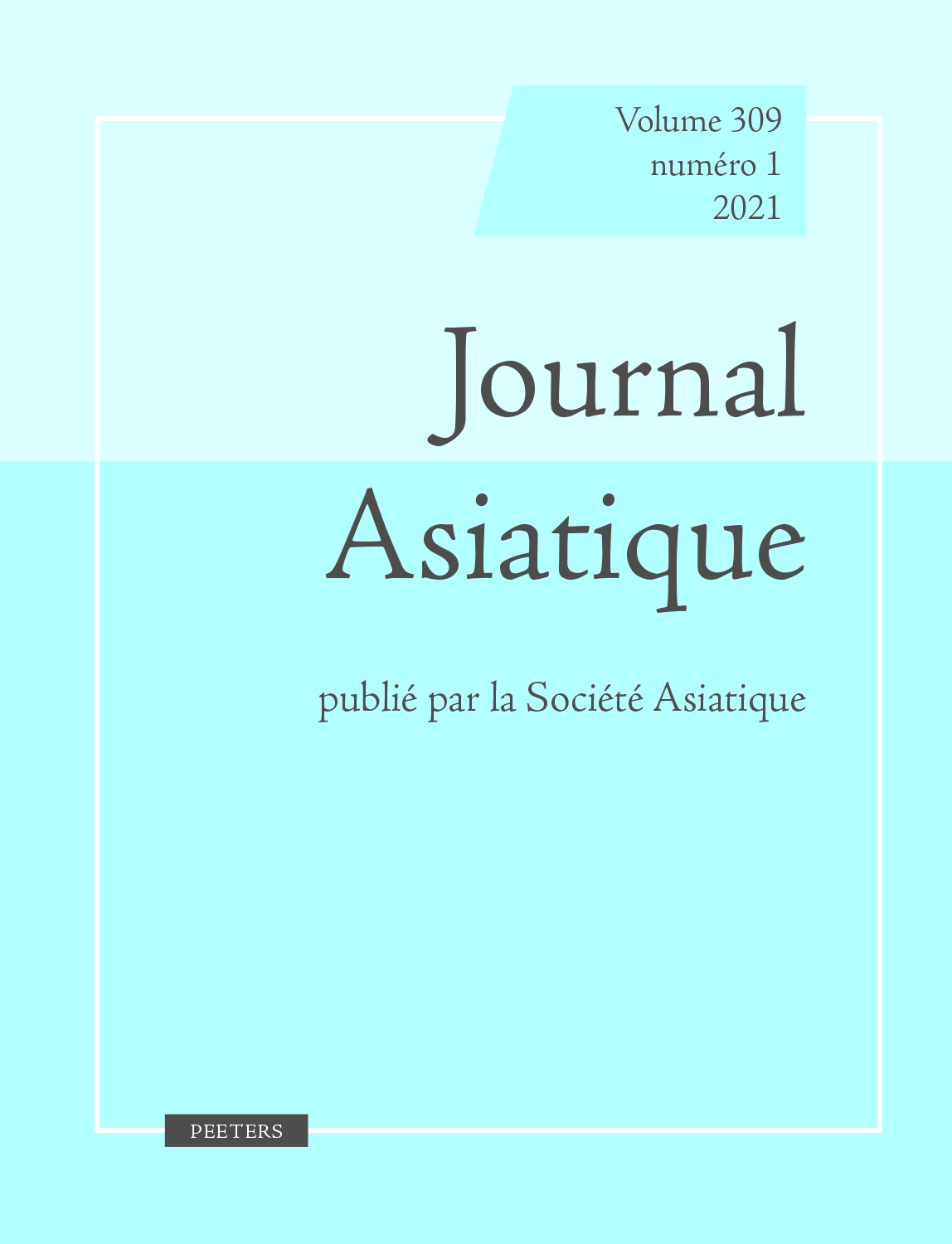 previous article in this issue previous article in this issue | next article in this issue  |

Preview first page |
Document Details : Title: Études du Corpus des inscriptions du Campā II Subtitle: La stèle d'installation de Śrī Ādideveśvara: une nouvelle inscription de Satyavarman trouvée dans le temple de Hoà Lai et son importance pour l'histoire du Pāṇḍuraṅga Author(s): GRIFFITHS, Arlo , SOUTHWORTH, William A. Journal: Journal Asiatique Volume: 299 Issue: 1 Date: 2011 Pages: 271-317 DOI: 10.2143/JA.299.1.2131066 Abstract : Cet article présente l’étude de la plus ancienne inscription de l’ancien Pāṇḍuraṅga, dans l’extrême Sud du Campā, datée de 778 de notre ère. La stèle qui porte cette inscription a été trouvée en 2006 sur le site de Hoà Lai (province de Ninh Thuân, Vietnam), et donne pour la première fois un argument épigraphique pour dater l’architecture de ce temple. La présentation de l’inscription donne également l’occasion de reconsidérer l’histoire dynastique, l’histoire des cultes religieux ainsi que les pratiques épigraphiques au Pāṇḍuraṅga à cette haute époque et durant les siècles suivants. Les aspects saillants sont une idéologie de succession matrilinéaire du pouvoir; des traditions politiques et cultuelles héritées du Zhenla et du Funan, ainsi qu’une condition d’indépendance effective du Pāṇḍuraṅga par rapport aux régions plus septentrionales du Campā; la domination du śivaïsme; une tradition spécifiquement locale de production d’inscriptions, dont Satyavarman aura été l’initiateur, et qui emploie pendant les siècles initiaux presqu’exclusivement la langue sanskrite. This article comprises the study of the oldest inscription of ancient Pāṇḍuraṅga, in the far South of Campā, dated to 778 CE. The stela bearing this inscription was discovered in 2006 at the site of Hoà Lai (Ninh Thuân province, Vietnam), and for the first time yields an epigraphic argument for the dating of the architecture of this temple. The presentation of the inscription further gives rise to a reconsideration of the dynastic history, the history of religious cults, and the history of the practice of epigraphy in Pāṇḍuraṅga in this early period, and during the centuries to follow. The most outstanding features are an ideology of matrilineal succession of power; the inheritance of certain traditions in the political domain and that of religious cults from Zhenla and Funan, in a situation of effective independence from the more northerly regions of Campā; the dominance of Śaivism; a specifically local tradition of epigraphical production, which seems to have been initiated by Satyavarman, and which relied in the early centuries almost exclusively on Sanskrit. |
|


